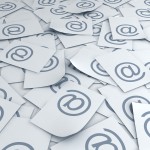Reputational damage always follows a major cyber crime hack. It was only a matter of time before we saw the real fall out from the recent Sony hacking

Email disasters
offensive, in terms of the damage to personal reputations (and possibly still the business’s reputation). Today is the start, with Amy Pascal feeling she should resign. It has always been my view that Barclays Bank Libor emails cost the bank and its management team more in reputational damage than the actual fine. They slipped out of the top 100 most trusted companies. Had the press not found those damaging emails, they would not have been the focus of such media attention. After all many other banks were in a similar position.
An unprecedented hack as happened to Sony will be forgiven, but not the vitriolic emails which show the company management culture is such disarray.
The moral is of course to think, think and think again before hitting send. Ask yourself. ‘what if a hacker found this email’. If you really cannot manage your impulsive behaviour then the solution is slow email and set a rule to delay sending all your email by a few minutes to allow for cooling off.
How well are you managing to reduce the risk to you and your business becoming the stars of the next email-gate media disaster? Contact us now to hear how we have helped other organisations protect their professional image by more effective email management.
Tags: Amy Pascal, email disasters, email management, Sony hacking 2014, Sony hacking scandal

Would you like to start the year with a clean inbox and learn how to keep it clean and reduce email overload? Join Mesmo Consultancy for the 7th International Clean Out Your Inbox week January 20 to 24. This year the email babes (Marsha Egan and myself) are thrilled to be joined by Steuart Snooks, Australia’s leading email management expert.We have created a dedicated Facebook page from which you will be able to access lots of new materials (from tips and hints to interviews with other leading email management experts). This is in addition to the daily blogs and Twitter tips to help you each day.
Click here to join our Facebook page and Like us please.
![]() Follow me on Twitter (as Emaildoctor) using #cleaninbox.
Follow me on Twitter (as Emaildoctor) using #cleaninbox.
More details to follow next week. Meanwhile, happy new year and thank you for your support during 2013. It was much appreciated. We look forward to seeing you in 2014.
Tags: Clean Inbox Week, email management, email overload, Marsha Egan, Steuart Snooks
Email cyber crime attacks effect one in two UK citizens and on average £247 is stolen from bank accounts per successful attack. Moreover, the Government’s Intelligence Services estimate that UK businesses are subjected to roughly 1,000 cyber attacks every hour. Email is often the low hanging fruit for the cyber criminal, rather like leaving the car keys near the front door so that the criminal can fish them out. How well do you and your business manage email security? When was the last time you updated your email best practice policy and provided any email management training?
There are two types of email security breaches, those we cause by carelessly leaking confidential information and those where others attack us. This blog deals with the former. Common cause of leaking confidential information by email (and not just during vacation time) are through:

Email security
Here are five top tips to help you manage the risk of a breach of email security and hence open the back door to a cyber crime attack especially during the vacation period.
If possible try to take an email free vacation. We all need down time. Dealing with sensitive emails over the holiday in a relaxed state of mind is often when breaches of security happen as we are at our most vulnerable. If you feel you cannot swich off it might be because you are suffering from email addiction. Click here to check if you are suffering email addiction.
Tags: email best practice, email cyber crime, email free vacation, email management, email overload, email security, out of office message
What does your inbox tell you about your management style? In Tuesday’s Financial Times, Naomi Shragia wrote a compelling piece about manager’s fear of delegating. Over the years we have reviewed many senior manager’s inboxes as part of our smart email management one-to-one coaching and training programmes. An obvious source of email overload is the higher than

Too much Cc’d = Email Overload
normal volume of Cc’d email.
When asked why there is so much Cc’d email and how much is really necessary the standard reply is along the lines of ‘I need to see what is going on’. But why if you have a team you trust? Or perhaps either you don’t really trust your team (be they junior or senior managers) or they don’t believe that you trust them. Consistently, I have observed a gap between what a manger says is
his style and the reality of business culture. Most managers tell you they delegate and have developed a culture of trust and empowerment. Few acknowledge to being mico-managers. Not so judging by the amount of Cc’d email. If reality matched perceptions, they and their team would make far less use of Cc’d email.
If the culture is one of trust and empowerment, Cc’d emails is only sent either in advance of an impending crisis or to say ‘job done, crisis averted’. As Shragai points out micro-management styles and a fear of delegating holds back many business and their employees. Sadly email adds fuel to this fire by encouraging email overload through excessive and unnecessary use of the Cc address line. Most people already loose one hour a day through email misuse: add to this mico-management and we have another recipe for lost productivity and raised stress levels.
Take a look at your inbox to see just how much Cc’d email is in it. Then ask yourself how much you really need. How much is vanity and a reflection of your own lack of trust and ability to delegate? If you need some help to reduce the volume of cc’d email and save you your business time, why not call us and book a one-to-one coaching session. We guarantee to save you time. If we don’t we don’t charge you!
if you would like some help reducing the email overload and moving towards a more productive business culture why not call us and ask about our smart email management one-to-one coaching can help you and your business.
Tags: cc'd email, email management, email overload
Tackling email overload can be a challenge. But not for some. From the e-babes ( Marsha Egan and myself), and as promised, here are fifty top tips from fifty top PAs and EAs at the recent Executive Secretary Live Conference organised by Lucy Brazier of Executive Secretary magazine.
Our thanks to all who contributed to our session on Taming the Email Tiger and to this blog with their top tips.
| “Action by, date” in the email subject line. |
| Get out of the habit of checking email every 5 min! |
| When writing an email, the last thing I fill out is the “to” or “cc” field, so in case I hit send button too early. |
| How do you send the calendar schedule as part of the email – only showing busy/free times? |
| Close the inbox to look at when you choose to – but set a ‘new item alert’ for those from the remotely working executive and train the executive! |
| Read Marsha’s book! |
| The knowledge that sending each email costs more global energy and therefore causes more environmental damage than sending a letter. (It’s because of location of server (?), power they use etc to process) makes me cut the number of emails I send. |
| To reduce ‘cc’ traffic when you have actioned emails on behalf of your director, change the subject line to include an eye catching statement such as (C have actioned P). Your boss can then just delete/move on to the next email! |
| When emailing external people: include the company’s name in the beginning of the subject line so they immediately know who they are being contacted by. |
| Colour code emails from most senior people. |
| It is easy for me to open emails which I am going to do during the day, others I stay unread for another day. Open emails help me to see information and after their end I close them. So the goal is not to have open email after work day. |
| Turn off emails that go to two places, eg yours and shared mailbox – one place = read once! |
| I indicate in subject list of the box what action I have taken or what needs doing. |
| Use categories, throw out the ones in outlook and create your own headings that relate to your role – invaluable. |
| Take an electronic day off with your day off (no email especially). |
| Delete emails which don’t have any importance. |
| Have a standard closure in your signature. |
| Using quick parts created in email, ie requesting travel arrangements, employee movements, colour code emails to identify Directors. |
| Don’t check/reply to emails out of office hours or people become to expect you to be working and contactable 24 hours a day, 7 days a week. |
| Drag emails into tasks to set deadlines. |
| Use Outlook categories when you drag and drop your inbox to action folders. So when you plan your day and it’s time to action ‘travel’ all travel emails are categorised in one place in outlook. |
| Write your email content and put the recipient name in last to avoid sending it prematurely. |
| When I check the mail I like to put the red flag and have the mail in to do list. |
| Don’t ping pong in emails for diary dates. I set up dates in doodle poll and send a link for all recipients to advise on their availability via doodle poll (www.doodle.com) |
| Put useful links either on notes, or into quick parts. Colourise inbox against your VIPs mails and use quick one click to action type of action in colour. |
| The control delete buttons so emails go completely rather than just into your deleted items. Also block sender so that goes into junk email. |
| For conferences/questions from participants: I pre-prepare std/route responses (we tend to have same Q’s all the time!) in order and then copy & paste and adjust as required. This saves a lot of time for our big meetings! |
| Turn off email notifications – has been my biggest time saver. |
| Don’t send emails outside off office hours. People read them on their smart phones and they appear ‘read’ in the computer mailboxes so they forget to respond. |
| Move your message to your task list. |
| For people working in global organisations, set up the delay send option so that your emails don’t get sent until their working hours. Also works well for people who do emails over weekend. It means that people with phones etc don’t feel the need to answer the emails in the evenings/weekends in response to their boss’s email. Also create a folder for meeting request and then set up a rule to send them all to the folder. |
| The delete button for unsolicited sales emails that do not interest me within 5 seconds. |
| Direct sorting into folders: personal/family & friends; boss, management group; newsletters |
| Colour code categories: travel required, invoices, expenses, to do, meeting set up, event, to follow |
| I’ve had my notifications turned off for a few months now – it’s been a great stress management tool. I do have a rule that my manager’s emails have a pop up notification – this allows me to prioritise his request over other actions. This works when if it’s something urgent. PS Luckily my manager has a wonderful email etiquette – so the emails form him are mostly actions, those that need to get done fairly quickly. |
| Attachments – copy and paste basic attachments into body of text – so it is easier to read as opposed to opening item up. |
| My tip is: never answer first on emails where you are in cc, but your response is required. Wait for person who is in ‘to’ field answer and then, if needed, do it yourself. Sure that the answer can hugely change! |
| Sending a networking directory excel file as a link (1) share excel workbook, then close (2) right hand click on file name on network drive and ‘create short’ (3) after shortcut created, right hand click, select send as email (4) when opened by receiver, changes can be (?) to file and can be ‘saved’ (don’t do save as). Works with Lotus Notes and can only be ?? if users and recipients have access to network drive/disc (?). Set up a rule on outlook or lotus notes that emails ‘from’ or with certain subject goes directly into a named folder, eg flight bookings. |
| I actually put emails in calendar entries to get them out of my inbox. |
| Use rules on Outlook for flyers, newsletters, travel to go to the named folder. |
| When I am chasing information for Director’s report which I have a time constraint on, I use the flag in outlook, which puts an alert in their inbox that I need the info by a certain date/time. |
| Attend a talk given by Marsha and Monica! |
| Use flags and reminders – action/discuss with boss. But keep in inbox so will continue with this but more out of inbox. |
| Switching off email notifications, meaning less distractions. Create rules – emails I’m cc’d in automatically in one folder, out-of-office go into another. |
| Use of draft box for important emails. Write, leave for a few minutes, check again before sending. |
| I’ve created a to-do-folder and put every email in, when I am going to fulfill the task I move it back to the empty inbox in order that I can see this email. |
| Print emails that need to be actioned and they can be added as a physical to do. |
| Use your OOO to manage expectations about when to expect a reply. |
| Use colour coding for email to be actioned. |
Click here ExecSecLive 2013 tips to download as a pdf.
Do you have a tip on either how to control email overload or corporate email etiquette that we have not yet published?
Tags: corporate email etiquette, email best practice, email management, email overload, Executive Secretary Live